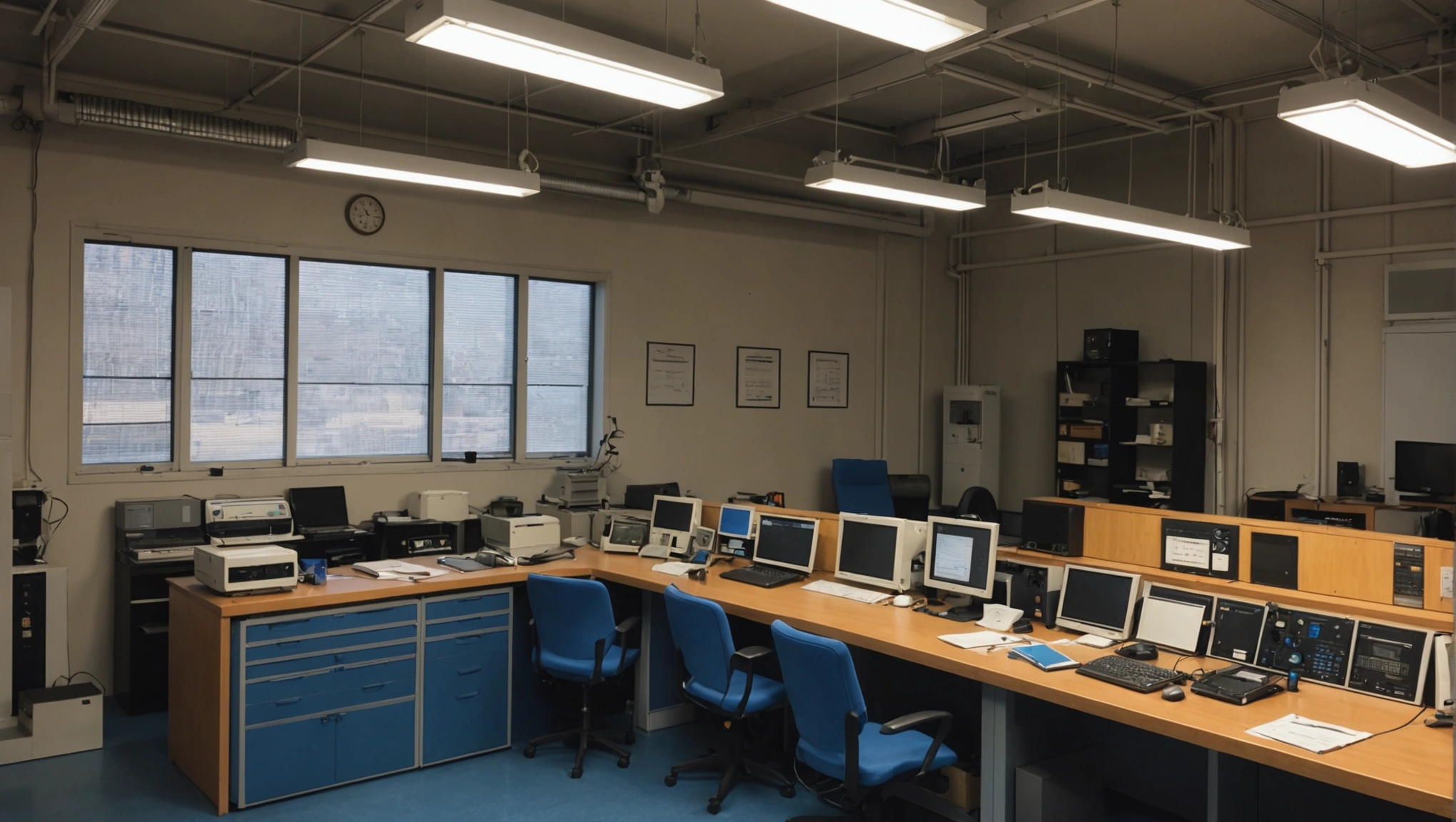
In various applications, UVB lamps are indispensable tools known for their critical role in ensuring optimal performance and safety. Delving into the factors influencing the lifespan of these lamps, such as usage hours, environmental conditions, and proper handling, proves essential for users. Effective maintenance practices, including routine cleaning and inspections, significantly contribute to prolonging the longevity of UVB lamps. By exploring these intricacies, individuals can enhance efficiency and prevent potential hazards associated with degraded or malfunctioning lamps. Discover the key to preserving performance and durability, unlocking the full potential of UVB lamps for diverse commercial and personal uses.
Understanding UVB Light
What is UVB Light?
UVB light, or ultraviolet B light, is a specific range of ultraviolet light that is important for reptiles' health. It plays a crucial role in their ability to synthesize vitamin D3, which is essential for calcium metabolism and overall well-being. UVB light is naturally emitted by the sun and is necessary for reptiles to maintain proper bodily functions. In the wild, reptiles bask in the sun to absorb UVB rays, but in captivity, artificial UVB light sources are used to provide this essential element.
Effects of UVB Light on Reptiles
Proper exposure to UVB light is crucial for reptiles to thrive in captivity. Without adequate UVB light, reptiles can develop health issues such as metabolic bone disease, weakened immune systems, and stunted growth. UVB light not only aids in the synthesis of vitamin D3 but also helps regulate calcium levels in the reptile's body. Insufficient UVB exposure can lead to serious health problems and even death in reptiles. It is important for reptile owners to understand the specific UVB requirements of their pets' species and provide appropriate Lighting to ensure their well-being.
Choosing the Right UVB Light
When selecting a UVB light source for your reptile enclosure, it is essential to consider factors such as the reptile species, the size of the enclosure, and the distance between the light and the basking spot. Different reptiles have varying UVB requirements, so it is crucial to research the specific needs of your pet. Additionally, UVB bulbs degrade over time, so it is important to replace them regularly to maintain adequate UVB output.
Monitoring UVB Exposure
Regularly monitoring UVB exposure is key to ensuring your reptile receives the right amount of light. UVB meters can be used to measure the UVB output in the enclosure and adjust the lighting setup accordingly. It is also important to provide a gradient of UVB exposure, allowing the reptile to move between areas with different light intensities to regulate its exposure.
Understanding the significance of UVB light and its impact on reptiles is fundamental for creating a suitable environment for these unique animals. By providing the right UVB lighting and ensuring proper exposure, reptile owners can help their pets lead healthy and fulfilling lives.
Selecting the Right UVB Lamp
When it comes to choosing a UVB lamp, there are several factors to consider to ensure you select the right one for your needs. Additionally, following best practices in selecting UVB lamps can help you make the most out of your purchase.
Factors to Consider
-
Type of UVB Lamp: There are various types of UVB lamps available, including narrowband and broadband. Each type has its own advantages and applications, so it's essential to understand the differences before making a choice.
-
Intended Use: Consider the purpose for which you need the UVB lamp. Whether it's for medical treatment, reptile care, or other applications, the intended use will influence the type of lamp you should select.
-
UVB Output: Different UVB lamps have varying levels of UVB output. Depending on the required dosage and intensity, you'll need to choose a lamp that provides the appropriate UVB levels for effective results.
-
Size and Coverage Area: The size of the lamp and its coverage area are crucial factors to consider. Ensure that the lamp's size matches the space where it will be used to maximize its effectiveness.
Best Practices in Choosing UVB Lamps
-
Consultation: If you're unsure about which UVB lamp to choose, consider consulting with a professional or expert in the field. They can provide valuable insights and recommendations based on your specific requirements.
-
Quality and Brand: Opt for UVB lamps from reputable brands known for their quality and reliability. Investing in a high-quality lamp may cost more initially but can offer better performance and longevity in the long run.
-
User Reviews: Before making a purchase, take the time to read user reviews and feedback on different UVB lamps. Real experiences from other users can help you gauge the lamp's effectiveness and suitability for your needs.
-
Maintenance Requirements: Consider the maintenance needs of the UVB lamp, such as bulb replacement and cleaning. Choose a lamp that aligns with your maintenance capabilities to ensure its longevity and optimal performance.
By considering these factors and following best practices, you can select the right UVB lamp that meets your requirements and delivers the desired results.
Installation and Placement
Proper Installation Guidelines
When it comes to installing a new device or piece of equipment, following the proper guidelines is crucial. This ensures not only the functionality of the product but also the safety of the users. In this section, we will discuss the step-by-step process of installing [Product Name] to guarantee a seamless experience. Proper installation involves first unpacking the product carefully, checking for any damage, and ensuring all components are included. Following the manufacturer's instructions precisely is essential to prevent any mishaps during the installation process. Properly securing the device in place, making necessary connections, and testing its functionality are key steps to successful installation.
Optimal Placement for Maximum Benefits
The placement of [Product Name] plays a significant role in its performance and the benefits it provides. Whether it's a piece of technology, furniture, or any other item, knowing where and how to place it can make a world of difference. We will explore the best practices for placing [Product Name] in your home or office to maximize its advantages and efficiency. Consider factors such as proximity to power sources, ventilation requirements, and accessibility when determining the optimal placement. Placing the device in a location that minimizes interference and maximizes its intended use can enhance its overall performance. Additionally, ensuring proper maintenance space around the device can facilitate easier upkeep and troubleshooting when needed. By strategically placing [Product Name], you can not only improve its functionality but also prolong its lifespan, providing you with long-term benefits and satisfaction.
Importance of Professional Installation Services
While many products come with detailed installation instructions for a DIY approach, some complex devices or systems may benefit greatly from professional installation services. Hiring experts to install [Product Name] can ensure that the setup is done correctly, minimizing the risk of errors or damage. Professional installers have the knowledge and tools necessary to handle intricate installations efficiently. They can also provide additional insights on optimizing the performance of the product through expert placement and setup. Investing in professional installation services for certain products can offer peace of mind and guarantee optimal functionality from the start.
Future-Proofing Your Installation
As technology evolves and your needs change, it's essential to future-proof your installation. Consider factors like scalability, compatibility with future upgrades, and flexibility when setting up [Product Name]. By anticipating potential changes and planning for them during the installation phase, you can save time and resources in the long run. Future-proofing your setup can also make it easier to integrate new features or components as they become available, keeping your system up-to-date and efficient. Stay informed about upcoming advancements in [Product Name] technology to ensure that your installation remains relevant and adaptable for years to come.
Environmental Considerations for Placement
In addition to optimizing the placement of [Product Name] for performance benefits, it's crucial to consider environmental factors that can impact its operation. Ensure that the location chosen for the device meets any specific environmental requirements specified by the manufacturer. Factors such as temperature range, humidity levels, and exposure to sunlight or moisture can affect the functionality and lifespan of the product. By placing [Product Name] in an environment that meets its operational conditions, you can prevent unnecessary wear and tear, malfunctions, or premature failure. Regularly assess the environmental conditions around the device to maintain an ideal operating environment and extend its longevity.
User-Friendly Installation Features
When selecting products for installation, look for user-friendly features that simplify the setup process. Manufacturers often design products with intuitive installation mechanisms, such as plug-and-play connectivity, color-coded components, or interactive guides. These user-friendly features can streamline the installation process, making it accessible to a wider range of users. Consider the ease of installation as a factor when choosing between different products or brands. Products that prioritize user experience during installation not only save time but also reduce the likelihood of errors or complications during setup. Take advantage of user-friendly installation features to quickly and efficiently integrate [Product Name] into your environment for immediate use and enjoyment.
Remote Installation Support and Troubleshooting
Some products may offer remote installation support or troubleshooting services to assist users in setting up [Product Name] correctly. Whether through online guides, video tutorials, or direct customer support, remote assistance can be invaluable in overcoming installation challenges. Take advantage of these resources to ensure that your device is installed properly and functions as intended. Remote troubleshooting services can also help diagnose and resolve any issues that may arise during or after the installation process. By leveraging remote support options, you can benefit from expert guidance without the need for on-site assistance, saving time and effort while ensuring a successful installation experience.
Maintenance Tips
Cleaning and Care Recommendations
Proper maintenance is crucial to ensure the longevity and effectiveness of your reptile's habitat. Here are some essential cleaning and care recommendations to keep in mind:.
-
Regular Cleaning: Clean the enclosure at least once a week. Remove any uneaten food, feces, and shed skin. Wipe down all surfaces with a reptile-safe disinfectant.
-
Substrate Replacement: Replace the substrate every 3-4 months or more frequently if it becomes soiled. This will help prevent bacteria buildup and maintain a hygienic environment.
-
Check Temperatures and Humidity: Regularly monitor the temperature and humidity levels in the enclosure. Make adjustments as needed to ensure they fall within the appropriate range for your reptile's species.
-
Inspect Decor and Accessories: Routinely inspect and clean decor items, such as rocks, branches, and hides. Remove any debris or waste to prevent bacterial growth.
-
Proper Feeding Practices: Ensure your reptile is receiving a balanced diet suitable for its species. Monitor feeding habits and adjust portions as needed to maintain a healthy weight.
-
Veterinary Check-Ups: Schedule regular check-ups with a reptile veterinarian to detect any health issues early and ensure your pet is in optimal condition.
Signs of a Failing UVB Lamp
The UVB lamp is an essential component of your reptile's habitat, as it helps simulate natural sunlight and aids in vitamin D synthesis. Here are some signs that indicate your UVB lamp may be failing:.
-
Diminished Output: If the UVB lamp appears less bright than usual, it may be losing its effectiveness. UVB bulbs degrade over time, so regular replacement is necessary.
-
Visible Damage: Cracks or black spots on the lamp indicate damage and can interfere with UVB radiation. Replace the lamp if you notice any physical defects.
-
Behavioral Changes: A lack of UVB exposure can lead to health issues in reptiles. If your pet displays symptoms like lethargy, reduced appetite, or abnormal shedding, it could be due to inadequate UVB lighting.
-
Proper UVB Placement: Ensure the UVB lamp is positioned at the correct distance from basking spots to provide adequate UVB exposure without causing harm from overexposure.
By following these maintenance tips and being vigilant for signs of a failing UVB lamp, you can provide a safe and healthy environment for your reptile companion. Regular care and attention to detail are key in ensuring the well-being of your beloved reptile friend.
Conclusion
Understanding the importance of the lifetime and proper maintenance of UVB lamps is crucial for ensuring their optimal performance in providing the necessary ultraviolet light for reptiles. By following manufacturer guidelines, regularly replacing bulbs, and keeping track of usage hours, reptile owners can create a safe and healthy environment for their pets while promoting their overall well-being. Remember, a well-maintained UVB lamp is essential for the health and vitality of reptiles in captivity.




